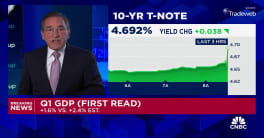Federal Reserve Chairman Ben Bernanke said the Fed has developed three programs to address problems in commercial paper markets, which suffered losses upwards of $500 billion in mid-September when investors withdrew their funds.
First, the Fed has allowed money market mutual funds to sell asset-backed commercial paper to banking organizations, which are then permitted to borrow against the paper on a non-recourse basis from the Federal Reserve Bank of Boston. Bernanke said usage of that facility peaked at around $150 billion and contributed to the ability of money funds to meet redemption pressures when they were most intense.
Second, the Fed has been funding a special-purpose vehicle that purchases highly rated commercial paper issued by financial and non-financial businesses at a term of three months. "This facility has purchased about $250 billion of commercial paper, allowing many firms to extend significant amounts of funding into next year," he said.
Third, the Fed will provide a liquidity backstop directly to money market mutual funds. This facility, expected to be in operation next week, is "intended to give funds confidence to extend significantly the maturities of their investments and reduce over time the reliance of issuers on sales to the Federal Reserve's special-purpose vehicle."
Bernanke said each of the three programs, created in accordance with the Fed's mandate, "must be terminated when conditions in financial markets are... no longer be unusual and exigent."
The Fed chairman said the $700 billion allocated by Congress are "continuing to bring stability to the banking system and have reduced some of the pressure on banks to deleverage, two critical first steps toward restarting flows of new credit."
Bernanke added that credit conditions are "still far from normal," but to combat the crisis, the Fed is taking steps to improve banks' access to capital and increase their capacity to lend.
Commercial paper - a low-risk, cost-effective debt instrument used for short-term loans and issued by firms with high-quality debt ratings - is used by many companies to finance day-to-day operations.
By Patrick McGee and edited by Nancy Girgis
©CEP News Ltd. 2008







